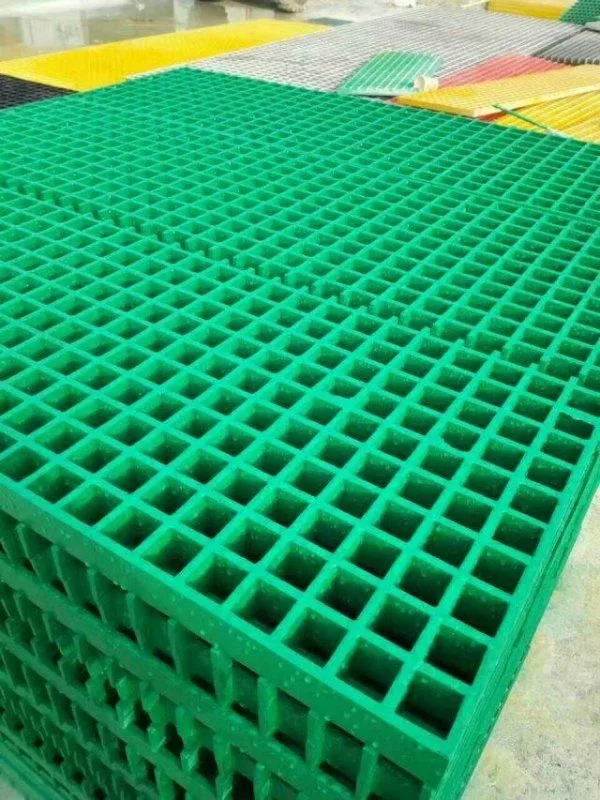Introduction to GRP Walkway Grating and Steel Grating
Industrial flooring solutions have evolved over the years, with materials like GRP walkway grating and steel grating becoming standard choices for a variety of applications. These materials are essential for creating safe, durable walkways in workplaces, public infrastructure, and even marine environments. But what sets these two apart, and how do you decide which is the right fit for your specific requirements?
To begin, let’s understand what GRP and steel gratings are, how they are made, and why they are used.

grp walkway grating
What is GRP Walkway Grating?
GRP (Glass Reinforced Plastic) walkway grating is a composite material made by combining high-strength glass fibers with a polymer matrix. This material is lightweight, corrosion-resistant, and incredibly durable. It is particularly popular in industries where harsh chemicals, moisture, or extreme temperatures are present.
Key Features of GRP Walkway Grating:
- High resistance to rust and chemical corrosion.
- Non-slip surface, ideal for wet or hazardous environments.
- Lightweight and easy to transport.
- Does not conduct electricity, making it safer in electrical zones.
What is Steel Grating?
Steel grating is a robust flooring solution crafted from welded or press-locked steel bars. It is well-known for its incredible load-bearing capacity and is frequently used in heavy-duty applications such as industrial plants, bridges, and heavy machinery walkways.
Key Features of Steel Grating:
- Exceptional strength for high-load environments.
- Durable under extreme pressure and mechanical stress.
- Heat and fire-resistant properties.
- Recyclable, aligning with eco-conscious practices.
Key Differences Between GRP and Steel Gratings
Understanding the distinctions between GRP and steel gratings can help determine their suitability for your specific needs.
Material Composition and Strength
- GRP Grating: Made from composite materials, it is resistant to corrosion but has a lower load-bearing capacity compared to steel.
- Steel Grating: Fabricated from metal, it offers unmatched strength, making it ideal for heavy-duty applications.
Weight and Handling Ease
- GRP Grating: Lightweight and easier to install or transport, especially in remote or hard-to-reach areas.
- Steel Grating: Heavier and requires machinery for installation, adding to labor costs.
Corrosion Resistance and Longevity
- GRP Grating: Highly resistant to rust and corrosion, perfect for damp or chemical-heavy environments.
- Steel Grating: Prone to rust unless treated with anti-corrosion coatings.
Installation Requirements
- GRP Grating: Can be cut and shaped on-site using simple tools, reducing installation time.
- Steel Grating: Requires specialized tools and expertise for cutting and fitting.
Maintenance Needs
- GRP Grating: Minimal maintenance due to its non-corrosive nature.
- Steel Grating: Needs regular inspections and treatments to prevent rust and damage.
Advantages of GRP Walkway Grating
Enhanced Safety Features
GRP gratings are designed with anti-slip surfaces, which significantly reduce the risk of accidents in wet or oily environments. Their non-conductive properties also add an extra layer of safety in areas with electrical equipment.
Versatility Across Industries
From offshore oil rigs to food processing plants, GRP gratings are used in diverse settings due to their resistance to chemicals, water, and extreme temperatures.
Cost-Effectiveness Over Time
Although GRP grating may have a higher upfront cost, its low maintenance requirements and longer lifespan make it a cost-effective choice in the long run.
Advantages of Steel Grating
High Load-Bearing Capacity
Steel grating is capable of handling heavy loads and machinery, making it indispensable for large-scale industrial applications.
Fire Resistance Features
In environments where fire safety is a priority, steel grating’s ability to withstand high temperatures is a major advantage.
Long-Standing Track Record in Heavy-Duty Applications
Steel has been a reliable material for decades, proving its effectiveness in high-stress conditions.
Common Applications of GRP and Steel Gratings
Industrial and Commercial Uses
- GRP: Chemical plants, food processing units, and areas with frequent exposure to moisture.
- Steel: Warehouses, factories, and heavy machinery walkways.
Marine and Offshore Installations
- GRP: Corrosion resistance makes it ideal for offshore platforms and coastal environments.
- Steel: Often used for shipbuilding and structural reinforcements.
Public Infrastructure Projects
- GRP: Bridges, pedestrian walkways, and drainage covers.
- Steel: High-traffic urban infrastructure like overpasses and railings.
Environmental and Sustainability Considerations
Eco-Friendly Aspects of GRP Grating
GRP is non-toxic and requires minimal resources for maintenance, reducing its environmental impact over time.
Steel Recycling and Reusability
Steel is one of the most recyclable materials globally, making it a sustainable choice for eco-conscious projects.
How to Choose Between GRP and Steel Gratings for Your Needs
Factors to Consider: Budget, Usage, and Environment
Evaluate the project’s requirements, including expected load, exposure to corrosive elements, and safety considerations.
When to Choose GRP Grating
Opt for GRP in environments with high moisture, chemicals, or electrical hazards, or where ease of installation is a priority.
When to Opt for Steel Grating
Choose steel for heavy-duty projects requiring high load-bearing capacity or where fire resistance is essential.
FAQs About GRP Walkway Grating and Steel Grating
- What is the lifespan of GRP walkway grating?
GRP gratings typically last 20–25 years with minimal maintenance. - Can steel grating be coated for better corrosion resistance?
Yes, steel gratings can be galvanized or coated with protective finishes to resist rust. - Is GRP walkway grating fireproof?
GRP is not inherently fireproof but can be made fire-retardant with specific coatings. - How do the costs of GRP and steel grating compare?
GRP has a higher initial cost but lower maintenance expenses, while steel is cheaper upfront but may incur higher long-term costs. - Which industries benefit most from GRP grating?
Industries like food processing, marine, and chemical manufacturing benefit greatly from GRP grating. - Are there custom design options available for either type of grating?
Yes, both GRP and steel gratings can be customized to fit specific dimensions and designs.
Conclusion: Making the Right Choice
Choosing between GRP walkway grating and steel grating ultimately depends on your project’s specific needs. GRP offers safety, corrosion resistance, and versatility, while steel delivers unmatched strength and durability. Evaluate your requirements carefully to make a decision that ensures both functionality and cost-efficiency.




























